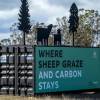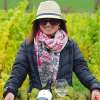
Tasmanian primary producers, environment and industry to benefit from trees on farms
Posted 30 October 2020
Managing trees On-farm benefits Economic benefits and markets Carbon benefits Native regrowth forest management PFT
A new brand and campaign was launched in October 2020 for Private Forests Tasmania. The Tree Alliance is aimed at raising awareness of farm forestry and the benefits of trees on farms, and to encourage and facilitate farmers to plant commercially viable trees in the agricultural landscape.
The campaign highlights the benefits that trees deliver in terms of increased primary production productivity, while simultaneously growing high value timber products, delivering biofuel, improving water quality and efficiency, and improving the carbon balance.
The campaign features a free expert helpline for farmers, Growing The Future magazine and a new website containing farming guides, case studies, forestry tools, species guide, FAQs, webinar series, a video series hosted by Journalist Sally Dakis and more.
With the demand for timber expected to quadruple by 2050, The Tree Alliance looks to meet these needs in an environmentally responsible way, while also benefiting the farm and land owners which trees are planted on.

Private Forests Tasmania Chief Executive Officer Penny Wells said planting trees on farms with the intention of harvesting and replanting was a win-win for the environment, society and landowners.
“Growing our wood products in Tasmania provides broader benefit to the state’s economy and reduces our carbon footprint,” Ms Wells said.
“In addition, there is a global shortage of wood and fibre, and farmers are the key to delivering the commercially viable resource of the future.
“To meet the Australian demand alone, we will need to plant a billion additional trees in Australia by 2030.
“Now is the time to be planting these trees.”
One Tasmanian farmer already reaping the benefits of tree planting is Logan’s Clare Peltzer. Two generations of tree planting on Logan has seen increased water efficiency, increased lamb survivability, and enhanced farm aesthetics for Ms Peltzer’s family run farm at Evandale.
Ms Peltzer, whose family produces prime lamb production for the export and domestic market, said decreasing the wind speed meant her business could increase yields, by reducing evapo-transpiration of the pasture and providing shelter for the lambing ewes.
“Trees are another tool that we can use on the farm to help us become more profitable by looking after the animal’s health and wellbeing, which is the main profit driver,” she said.
“When you plant trees, you do get the initial loss in pasture, but if we’re putting in 20 hectares of trees and we’re lambing down 8,600 ewes, the 5% to 10% increase in lambing survivability definitely outweighs any hectares lost in the current market.”
In conjunction with The Tree Alliance launch is acknowledgement of the seven Tasmanian primary producers due to participate in the Landscape Demonstration Sites Program.
Co-funded by Private Forests Tasmania, the federal government (through the Smart Farming Grant) and primary producers, $600k in funding will help develop a landscape-scale best practice integration of shelterbelts and woodlots into the Tasmanian agricultural landscape.
Trees totalling 212 hectares will be planted on seven Tasmanian farms over the next year.
Planting for the Landscape Scale Demonstration Sites Program will commence in late winter/spring 2021.
The trees, consisting of Radiata Pine, Blackwood, Eucalyptus Globulus, Eucalyptus Nitens and other mixed species, will be integrated into farming enterprises that currently include prime lamb, wool, grass seed, cereal grains, forestry, aquaculture, dairy, beef, cropping, seed growing and potential future horticultural crops.

Supporters of the Tree Alliance:
The Tree Alliance aims to bring together a range of organisations to collaborate to achieve the tree planting and communication objectives. Current supporters include:
- Tasmanian Farmers and Graziers Association
- Tasmanian Agricultural Productivity Group
- Tasmanian Timber
- Tasmanian Forests and Forests Product Network
- We Act
- Climate Friendly
- The Centre For Sustainable Architecture With Wood (University of Tasmania)
- CSIRO
- NRM South
Farmers participating in the Landscape Scale Demonstration Sites Program
- Winton: 1050 Valleyfield Road, Campbell Town
- Logan: 635 Logan Road, Evandale
- Gunningham: 794 Montumana Road, Montumana
- Kenilworth: 830 Valleyfield Road, Campbell Town
- The Black Run: Curly’s Lane, Ellendale
- Chester: 109 Gibsons Road, Selbourne, Westwood
- Fulham: 258 Fulham Road, Dunalley






